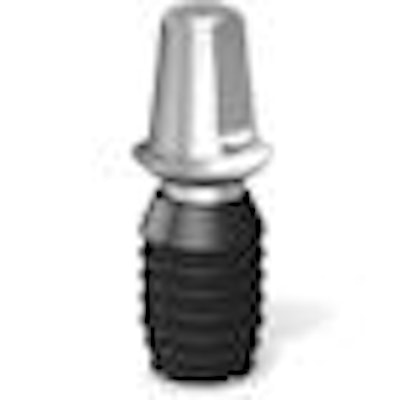
History has not been kind to short implants. More often than not the dental community has dismissed these tiny prostheses as experimental and prone to failure, according to proponents of this technology.
But such objections are "ridiculous misconceptions," said Rainier Urdaneta, D.M.D., at the recent Yankee Dental Congress in Boston. In fact, short implants are superior to their longer counterparts, he told his audience, citing a body of research he said supports this claim.
"The only ones difficult to convince about short implants are dentists," said Dr. Urdaneta, a clinical professor at Harvard University who works at the Implant Dental Centre in Boston, which specializes in placing Bicon short implants. He also teaches courses at the Bicon Institute but said he is not employed by Bicon.
Short implants placed at the Implant Dental Centre have a survival rate of 96%, said Dr. Urdaneta, adding that more than 20 different scientific papers have documented their benefits.
It's the width
The key to the implants' strength is their width, Dr. Urdaneta said. As long as they are at least 3 mm wide, they do not break, he said. Typically, such implants are embedded about 7.9 mm into the bone, but some are inserted only 5 mm deep. By contrast, long implants can be placed more than 11 mm into bone.
— Rainier Urdaneta, D.M.D., Harvard
University
With short implants, "most impressive is what happens below the gum," he said. Some patients who wear these implants for five years have gained more than 1.5 mm of bone, according to Dr. Urdaneta.
Contrary to popular belief, he said, relatively large crown-to-implant ratios don't cause crestal bone loss. He cited a study in the International Journal of Oral and Maxillofacial Implants that compared bone loss of implants with different crown-to-implant ratios (JOMI, January-February 2005, Vol. 20:1, pp. 69-76). "Long implants and/or splinting can result in greater crestal bone loss," the study authors concluded.
Traditionally, many prosthodontists have tried to achieve a 1:1 crown-to-implant ratio. But studies have shown that ratios up to 4.95 do not lead to significant increases in crestal bone loss, according to Dr. Urdaneta. "I've seen these things work for years," he said.
Bone grows better around the short implants because of these implants' design, Dr. Urdaneta said. Unlike traditional implants, which are screwed and cemented into bone, Bicon implants are set into place, and their finlike shape allows for bone to form between the implants' two protruding sections, he said.
A money saver
"Why are we drilling holes in our patients that are deeper than 6 mm?" Dr. Urdaneta asked. Dentists are putting patients through all kinds of painful and costly procedures, which can often be eliminated with short implants, he said.
With short implants, the need for bone grafting can be minimized, he said. And worries about implants getting too close to sinuses or nerves can be wiped out, too. In addition, with short implants the need for CT scans in patients is also virtually eliminated because there is almost no chance that a short implant will hit the mandibular nerve -- something many prosthodontists fear, Dr. Urdaneta said.
In addition, the entire short implant graft costs about $1,700, compared to $4,000 to $5,000 for traditional implants, he said.
Short implants are so popular at the Implant Dental Centre that 95.2% of all procedures conducted there in 2007 were with these prostheses, up from 58.6% in 2001, Dr. Urdaneta noted. And yet, while the center has placed about 7,000 short implants over the past eight years, only about 10% of implant patients in the U.S. have been treated with the short variety, he said.
This is because the major implant companies don't make the short variety, according to Dr. Urdaneta.
But as research on short implants begins to make its way into prestigious peer-reviewed journals, there is a chance that dentists will begin to listen, he concluded.
Copyright © 2010 DrBicuspid.com



















